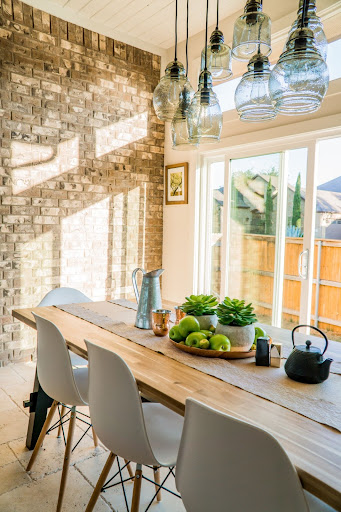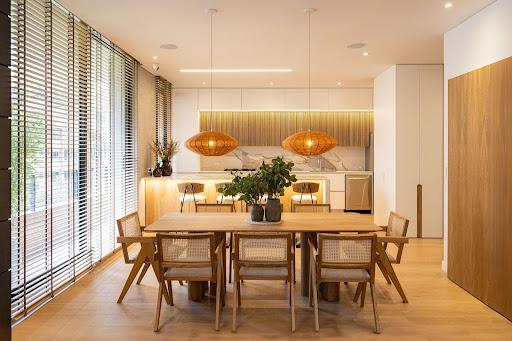With its inherent charm and durability, wood furniture has been an integral part of our homes and establishments for centuries. As the demand for quality wood furniture escalates, a deeper understanding of its intricate components becomes paramount.
As a renowned wood furniture parts manufacturer, Keller Wood Products steps in to highlight the vast array of items that rely on wood furniture parts for their structure and elegance. Through this blog, we aim to provide insights and educate readers on the nuances of wood furniture craftsmanship.
Parts for Wood Furniture: The Basics
Furniture parts are the individual components that, when assembled, form a complete piece of furniture. Integral to this assembly are wood furniture parts, which bring together tradition and design innovation. These components vary in function, size, and aesthetic, but each plays a pivotal role in the overall look and utility of the furniture.
Every piece of furniture is a symphony of individual parts, each bringing its unique tune. From legs supporting a grand dining table to the knobs on a vintage dresser, each component is meticulously designed and crafted to serve its function while adding to the furniture’s aesthetic appeal.
Common Types of Parts for Wood Furniture
Though numerous furniture styles exist, certain components remain universally recognizable. Understanding these elements can assist both in design and repair projects.
Legs, Arms, and Backs
The furniture’s sturdiness and comfort largely depend on the quality and design of the legs, arms, and backs. These are foundational elements that determine a piece’s functionality and overall aesthetic.
Legs
These are foundational supports in furniture items ranging from tables and chairs to couches and bed frames. Their designs can vary from straightforward block styles to ornately carved versions that serve as decorative features.
Arms
Predominantly found in seating furniture like sofas, armchairs, and benches, arms enhance comfort. Their designs can range from sleek, modern lines to plush, cushioned styles, each setting the tone for the furniture’s overall aesthetic.
Backs
These are pivotal in items like chairs, couches, and beds. Apart from providing ergonomic support, backs can be adorned with features like tufting, inlays, or carving, which can dictate the item’s style — be it minimalist, traditional, or luxurious.
Drawers, Handles, and Knobs
Storage and accessibility are vital components in furniture design. Incorporating drawers, handles, and knobs plays a significant role in determining a piece’s convenience and decorative appeal.
Drawers
Integral to storage-focused furniture such as dressers, desks, bedside tables, and cabinets. They keep spaces organized and can vary in depth, width, and design, often complementing the furniture’s overall style.
Handles and Knobs
These small components play a dual role – ensuring accessibility while acting as pivotal decorative elements. From minimalist metal pulls to ornate wooden handles, their design can significantly influence a furniture piece’s overall look.
The Role of Quality in Furniture Parts
As with all things, quality in furniture is what determines whether a piece, crafted with premium wood furniture parts, becomes a fleeting purchase or a timeless heirloom.
Importance of Material Choice
The material’s quality is paramount. It directly impacts the furniture’s longevity, strength, and aesthetic appeal. For instance, the top-tier materials employed by Keller Wood Products not only ensure durability but also exude unmatched visual charm.
Ensuring Durability and Longevity
It’s not just about selecting the right wood. From seasoning to finishing, the treatment processes play a significant role. For example, a piece made of hardwood, given its natural strength and resistance, might outlast softer woods in similar conditions. But without proper treatment, even the best woods can fall short of their potential lifespan.

Wood Parts for Furniture: Diving Deeper into Materials
Craftsmanship in furniture often begins with choosing the right wood. Each with distinct characteristics, various kinds of wood are employed in crafting wooden furniture parts that stand the test of time.
Hardwoods vs Softwoods: Pros and Cons
When evaluating wood furniture parts, the distinction between hardwoods and softwoods is foundational. These terms don’t merely hint at the wood’s density but often correlate with its durability, aesthetics, and cost.
Hardwoods (e.g., oak, walnut, mahogany)
Central to many iconic pieces of furniture, hardwoods are renowned for their robustness and depth of character. Their resilience makes them a staple in high-traffic areas of a home or commercial spaces.
Pros: These wood furniture parts are known for their durability and long-lasting nature. They’re resistant to wear, making them ideal for furniture that sees frequent use.
Cons: They come with a heftier price tag and can be heavier, which may be a consideration for pieces that need to be moved often.
Softwoods (e.g., pine, cedar)
Derived primarily from coniferous trees, softwoods have long been favored for their versatility and ease of sourcing. Their generally lighter hues and textures offer a different aesthetic appeal, complementing rustic and modern furniture designs.
Pros: Softwood furniture parts are lighter in weight, making them easier to handle. They are often less expensive, making them a favorite for budget-conscious projects. Additionally, they are more malleable, which can be a boon for intricate designs.
Cons: Their beauty can be short-lived if not cared for properly, as they’re less durable and more susceptible to dents and scratches.
Exotic Woods and Their Unique Appeal
Woods from far-flung corners of the world, like teak, rosewood, and ebony, are revered in the furniture industry. These wooden furniture parts captivate with their unique grains, rich colors, and textures. Incorporating them can elevate a piece from ordinary to extraordinary, offering a distinct and luxurious feel.
Treating and Finishing Wood Parts
The importance of treating and finishing can’t be overstated when it comes to wooden furniture parts. It’s not just about appearance; it’s about preserving the wood’s integrity and enhancing its lifespan.
Protective Coatings and Their Importance
For any piece of furniture to truly last, protective coatings are essential. These layers act as barriers, guarding wood furniture parts against adversaries like moisture, UV rays, and daily wear and tear. This not only ensures durability but keeps the furniture looking pristine for longer.
Aesthetic Finishes: Stains, Varnishes, and Paints
Beyond protection, aesthetic finishes like stains, varnishes, and paints play a pivotal role in defining the look of wood furniture parts. They can either amplify the wood’s natural allure or transform its appearance entirely, offering endless possibilities for customization in color and style.
Industries Embracing Wooden Furniture Parts
Across various sectors, the demand for wooden furniture parts is palpable, driven by aesthetic allure and enduring functionality. These components not only reflect craftsmanship but also resonate with broader industry trends, emphasizing sustainability, authenticity, and a return to timeless values.
The Resurgence in Home Décor and Interior Design
The renewed interest in authentic materials within the home décor industry highlights the intrinsic value of wood furniture parts. Revered for their durability and aesthetic versatility, these components bring spaces a harmonious blend of old-world charm and contemporary flair.
The Role of Wooden Elements in Modern Homes
Given their tactile nature and innate warmth, wooden furniture parts have found their way into modern homes. Ranging from sleek wooden cabinetry to intricately carved wooden accents, these elements instill a sense of organic luxury that resonates with today’s homeowners.
Integrating Traditional and Contemporary Designs
Marrying the finesse of traditional wooden craftsmanship with the sleek lines of contemporary design, today’s designers are crafting spaces that echo heritage and innovation. Punctuated by wooden furniture parts, these unique settings cater to a discerning clientele that values both style and substance.
The Hospitality Sector and Its Demand for Quality
In the hospitality industry, where every detail speaks volumes, including premium wooden furniture parts is non-negotiable. The tactile nature and aesthetic appeal of wood amplify the guest experience, setting establishments apart in a competitive landscape.
Hotels, Resorts, and the Appeal of Wooden Accents
Prominent hotels and resorts around the globe understand the allure of wood. Incorporating wood furniture parts, from majestic wooden bed frames to intricately designed wooden tables, reinforces an ambiance of luxury. Guests, enveloped in these spaces, are treated to a sensory experience that melds comfort with sophistication.
The Return to Nature: Eco-Friendly Retreats and Lodges
The travel landscape is witnessing a paradigm shift towards sustainable and responsible tourism. This is why many lodges and retreats champion using sustainable wooden furniture parts. In their quest to provide eco-friendly havens, these establishments underscore their commitment to the environment while delivering an authentic, grounded experience to the traveler.
Navigating the realm of furniture design demands an intricate understanding of the significance of wood furniture parts. Through generations and across industries, these parts have been the keystones of design excellence and enduring quality. For expert guidance and unmatched craftsmanship in wood furniture parts, contact Keller Wood Products today!

